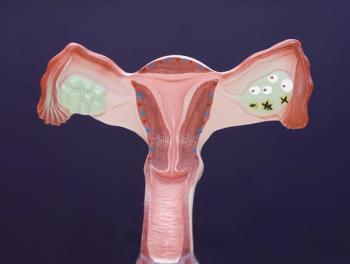
ASCO: Vinegar Screening Significantly Reduces Cervical Cancer Mortality
Biennial visual inspection with acetic acid (vinegar) screening by trained public health workers significantly reduced cervical cancer mortality in a large cluster-randomized controlled trial conducted among thousands of women from poor neighborhoods in Mumbai, India.
CHICAGO-Biennial visual inspection with acetic acid (VIA) screening by trained public health workers significantly reduced cervical cancer mortality in a large cluster-randomized controlled trial conducted among thousands of women from poor neighborhoods in Mumbai, India. Results were reported at a plenary session by Surendra Srinivas Shastri, MD, head of the department of preventive oncology at Tata Memorial Centre, Mumbai. The findings have implications for improvement of healthcare delivery to underserved populations in developing countries and possibly as well for low-resource areas in countries with more advanced health care systems.
Age-standardized death rates from cervical and uterine cancer by country (per 100,000 inhabitants, WHO 2004 data); source: Lokal Profil, Wikimedia Commons
“Cervical cancer is the most common cancer among women in developing countries and is the leading cause of cancer death in Indian women,” said Shastri. “Unfortunately, we do not have a national cancer screening program.” Because cytology-based screening is not easily implementable in India because of cost, logistics, and other factors, “there is need to evolve simpler alternatives.”
“VIA is a simple visual test that does not require lab support,” he continued. “Results are available immediately. Paramedical workers can be trained in four weeks. Therefore, VIA can be used in countries with the lowest resource settings…such as India.” VIA involves application of freshly prepared acetic acid to the cervix. After one minute, areas with dysplasia appear white and the rest of the healthy cervix looks pink. “Only thick, well-defined acetowhite areas near the transformation zone-either on the endocervix or ectocervix, or both-are classified as VIA-positive.”
Women aged 35 to 64 years with no prior history of cancer were included in the study, designed to include 20 clusters with an average of 7,500 eligible women per cluster. Four rounds of cancer education and VIA screening were conducted by public health workers at 24-month intervals in the screening group. Cancer education was offered once at recruitment to the control group. Both groups were monitored for incidence and mortality of cervical cancer. Results were analyzed after 12 years.
“We recruited 75,360 women from 10 clusters in the screening group and 76,178 women from 10 comparable clusters in the control group,” said Shastri. “In the screening group, we achieved 89% participation for screening and 79% compliance for post-screening diagnostic confirmation.” The quality of screening by the public health workers was reviewed and found comparable to that of an expert gynecologist (κ = .84). Confirmed pre-invasive or cervical cancer cases from both groups were treated at no cost at Tata Memorial or referred to another hospital of the patient’s choice.
Results
“In 10 years there had been 67 cervical cancer deaths in the screening group and 98 in the control group,” said Shastri, “a 31% reduction in mortality (P = .003). Incidence of invasive cervical cancer after 12 years was 26.74 per 100,000 (95% CI, 23.41–30.74) in the screening group and 27.49 per 100,000 (95% CI: 23.66–32.09) in the control group. Compliance to treatment for invasive cancer was 86.34% in the screening group and 72.29% in the control group. A 7% reduction was also observed in all-cause mortality (mortality rate ratio [RR] = 0.93; 95% CI, 0.79–1.10; P = .41). “VIA screening is easily implementable and could prevent 22,000 cervical cancer deaths in India and 72,600 deaths in resource poor countries annually,” he concluded.
In commenting on the findings, Electra D. Paskett, PhD, director of the division of cancer prevention and control, department of internal medicine at Ohio State University, said “VIA is a validated, acceptable, cheap, implementable screening tool” that can save lives in low-resource countries. “Perhaps,” she added, “it can be explored as an alternative in low-resource areas in developed countries.” If properly implemented with good participation and follow-up, she said, “I think we could save a quarter of a million lives each year.”
The study was funded by a grant from the National Institutes of Health. Treatment costs were provided by Tata Memorial Centre and the nonprofit Women’s Health Initiative.
Newsletter
Stay up to date on recent advances in the multidisciplinary approach to cancer.

















































































